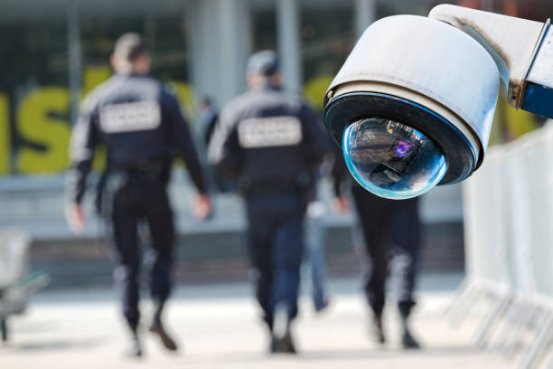Protecting Your Construction Site: Security Essentials
A secure construction site protects valuable tools, materials, and workers from theft, vandalism, and danger. This guide explores essential strategies—from guard roles and video monitoring to fully integrated systems—to help maintain safety and reduce disruption across all types of building projects.
A secure construction site protects valuable tools, materials, and workers from theft, vandalism, and danger. This guide explores essential strategies—from guard roles and video monitoring to fully integrated systems—to help maintain safety and reduce disruption across all types of building projects.

Security Staff: Core to Construction Site Protection
On any job site, trained security professionals serve as the foundation of effective protection. Their vigilance helps maintain order and ensure only authorised individuals gain access.
Responsibilities Include:
-
Site Patrols and Surveillance: Continuous checks, both in-person and via CCTV, spot early warning signs of unauthorised activity.
-
Access Control: Guards verify credentials and monitor all entries and exits to safeguard restricted zones.
-
Incident Response: During emergencies, they help coordinate evacuations, contact emergency services, and keep the scene secure.
-
Documentation: Accurate daily logs and incident reports support both legal compliance and ongoing risk management.
Key Skills:
Security officers must remain alert under pressure, be able to communicate clearly, use security equipment effectively, and respond swiftly to incidents.
On-Site Guards: Your Front-Line Defence
Security guards are a visible deterrent to trespassers or thieves. Their presence alone often discourages unauthorised access and protects against potential threats.
Typical Daily Tasks:
-
Perimeter Inspection: Regularly walking the boundaries to confirm fencing and gates are secure.
-
Entry Logs: Recording who comes in and out to maintain control over personnel movement.
-
Emergency Support: Guiding staff during incidents such as fires or medical emergencies.
-
Police Coordination: Supporting law enforcement if a crime or serious injury occurs on site.
Training:
Most guards are trained in de-escalation, emergency procedures, and surveillance equipment. Certification ensures they meet safety and legal standards expected in the construction industry.
Video Surveillance: Strengthening Visibility and Response
CCTV systems offer vital oversight across a site. They assist with real-time threat detection and post-incident investigation, making them an essential component of any security plan.
Camera Types:
| Type | Coverage | Night Capable | Approximate Cost |
| Fixed | Focused areas | Optional | Low |
| PTZ | Adjustable & wide | Yes | Medium |
| Thermal Imaging | Broad visibility | Excellent | High |
Fixed cameras monitor static points like entrances, PTZ models allow broader control, and thermal cameras are ideal for 24-hour coverage regardless of lighting.
Choosing the Right Security Services
A layered approach provides stronger protection. Depending on your site’s size and risk level, you can combine various service options:
-
Manned Guarding: Employs trained personnel to observe, report, and act on threats.
-
Mobile Patrols: Extend coverage with scheduled walk-throughs or vehicle patrols, especially on larger sites.
-
Alarm Response Teams: Ready to investigate alarms triggered by motion or sound detectors.
Factors to Consider When Hiring a Security Company
Picking a competent provider can significantly impact your site’s overall safety. Look for:
-
Industry Experience: Companies that understand construction-specific risks can better meet your needs.
-
Flexible Packages: A provider offering guards, cameras, and emergency response can adapt to your project scale.
-
Client Feedback: Positive reviews and long-term clients suggest high service quality and trustworthiness.
The Advantage of Integrated Site Security Systems
Combining various security technologies offers a smarter and more efficient defence strategy.
Common Features:
-
Surveillance Systems: Continuous video monitoring of access points and material storage areas.
-
Alarms: Alert site managers to motion, intrusion, or pressure changes.
-
Access Control: Staff logins, ID cards, or biometric scanners help restrict access.
-
Motion Sensors: Fill in coverage gaps between cameras or restricted areas.
System Benefits:
-
Central Monitoring: Access all security information from a unified control system.
-
Faster Response Times: Integrated systems reduce delay in reacting to threats.
-
Analytic Tools: Use incident data to assess site weaknesses and update protocols accordingly.
Frequently Asked Questions (FAQ)
Q1: What qualifications do construction site security personnel need?
A1: Typically, a security guard licence, site-specific training, and physical capability to perform patrols and emergency response.
Q2: Can a visible guard really deter theft?
A2: Yes. Visible personnel significantly reduce the chance of unauthorised access, especially after hours.
Q3: Are surveillance cameras enough on their own?
A3: Cameras help detect and document threats, but they are most effective when paired with manned guarding or mobile patrols.
Q4: What makes thermal cameras valuable?
A4: They detect heat rather than light, offering excellent performance in darkness or low-visibility conditions.
Q5: Why choose an integrated system?
A5: Integration allows different technologies to work together, providing seamless coverage and coordinated alerts for better site management.
Final Thoughts
A well-rounded security plan—with trained guards, modern surveillance, and integrated technologies—can greatly reduce risks and help keep your construction site running smoothly. Choosing experienced providers and adopting a multi-layered strategy ensures that people, materials, and timelines stay protected.
Sources:
- https://jobs.aus.com/job/riverton/security-officer-construction-site/22950/82194529184
- https://www.belfrysoftware.com/blog/security-guards